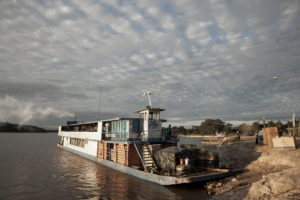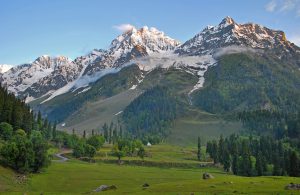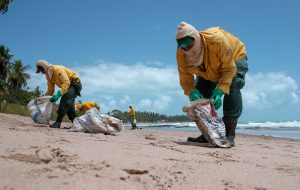Going by the number of people involved as members or partners, BRAC is the world’s largest NGO. At the December 2-13 UN climate summit in Madrid, it announced that it will now tailor all its development programmes to minimise climate risk in Bangladesh. thethirdpole.net spoke to Liakath Ali, Director of the Climate Change Programme in BRAC, about the new plans of the organisation.
Excerpts:
Incorporating or mainstreaming climate change in development is the responsibility of governments; Why is BRAC taking on this responsibility?
The magnitude of the challenges posed by climate change needs action from all parties – both government and non-government – to solve the crisis and continue existence on the only planet we have got. To make resilience mainstream is the key.
Since its inception BRAC has been working with the government of Bangladesh. The organisation has a reach of over 120 million people in Bangladesh and 11 other countries. We think mainstreaming climate resilience not the responsibility of governments only. It is our collective responsibility to face the biggest threat in human history.
What are the expected impacts of your new approach?
Conventional and business-as-usual approach in the development sector is not effective in overcoming the climate challenges. A comprehensive drive is a must. To do this in quick time and to cover more vulnerable people, mainstreaming is necessary. The concept of resilience talks about not only adaptation. It covers adaptive capacity, anticipatory capacity, adsorptive capacity and transformation. Through its various programmes, BRAC can do it faster than others.
For example, if we think of providing livelihood support without considering future climate change impacts, the support may not attain its objectives. If the climate change impacts are considered from the very beginning then the support could be more effective.
How are you mainstreaming climate resilience in your projects?
The most important initial action in mainstreaming is to assess organisational readiness, followed by proper capacity building, appropriate activity designing and allocating resources. BRAC has done an in-depth assessment of its readiness in mainstreaming climate change, formulated related policies such as BRAC climate change strategy, environmental and social safeguards, and an environmental policy. It also tries to align with governments’ policies, strategies and plans to deal with climate change.
The organisation has been doing capacity building of its staff. Right at the project design stage, we screen programmes through a climate lens. All programmes are made climate smart so that they are sustainable.
How many people have you reached? What is your target?
In 2018 alone, we reached 1.7 million people in around 336,000 households through integrated climate-resilient solutions. In 2020, the figure will reach 2.65 million.
Can you explain the services through which you are reaching people?
We support people with adaptive and climate resilient water, sanitation and hygiene (WASH) services, low cost resilient housing in urban and rural contexts, adaptive agricultural technologies, and livelihood options. We also provide climate information in our education curriculum, plant trees and provide solar home systems. We connect people to access finance, build capacity of our staff and create awareness. We are building capacity among the communities we work. We focus on working with the youth, our future leaders who will have to tackle climate change.
What are the challenges you face?
We are working in a dynamic situation. Sea level rise, salinity, frequency and magnitude of the climate-related disasters like floods and cyclones are increasing. Finding appropriate technology in every context is a big challenge. Another big challenge is to find money for climate-resilient projects. Yet another is the absence of long-term climate impact projections at a local scale. Due to this, it becomes more difficult to plan climate-resilient projects. For example, the Haor (wetland) areas in [north-eastern] Bangladesh usually experience flash flood in mid-May. But in 2017, the region had flash floods three weeks earlier, when around a million farmers were waiting to harvest their only crop. Two million tons of foodgrains were damaged. If we had known about this possibility, we may have advised farmers to sow crops that mature faster.
![<p>Liakath Ali, Director of the Climate Change Programme in BRAC [image by: Joydeep Gupta]</p>](https://dialogue.earth/content/uploads/2019/12/Liakath-Ali-Siddique.jpg)








![A local in the Nubra Valley of Ladakh, looking towards the Korakoram mountain range, which hosts the Siachen Glacier [image by: Athar Parvaiz]](https://dialogue.earth/content/uploads/2019/12/A-local-in-Nobra-Valley-of-Ladakh-looks-towards-the-Korakoram-mountain-range-which-hosts-the-Siachen-Glacier-Photo__Athar-Parvaiz-300x199.jpg)